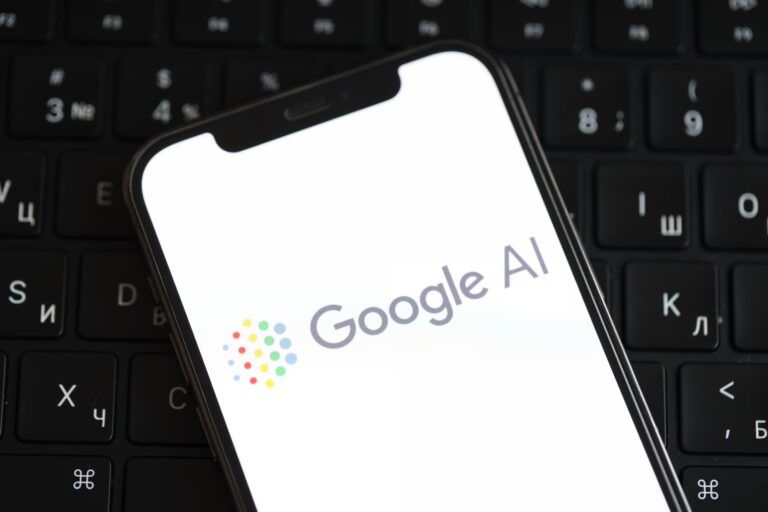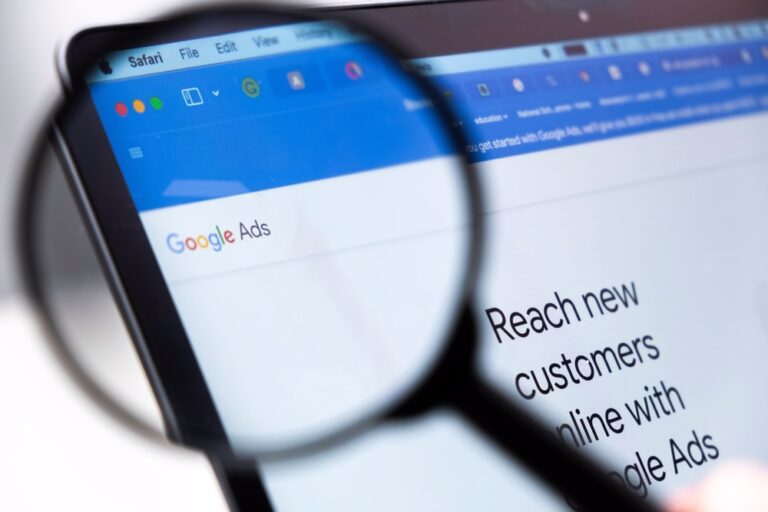Digital Marketing is constantly changing, with trends followings the new technology we use, new business models, consumer habits, and more. 2014 has seen many changes, with the rising use of mobile internet, alongside new web design trends, and 2015 is set to continue this trend.
So what trends are predicted to take off in 2015? Below you will find some expected evolutions in the digital marketing space, and the technology that alters how brands can connect with customers.
Mobile dominance
Mobile is quite simply the future, with 93% of the world’s population owning a mobile phone. Social media is also now more widely used on mobile than ever before, with 71% of social media users accessing the sites from a mobile.. Not only this, but social media has geotargeting, and very contextual content, meaning it’s based in the here and now.
4G networks, with 5G already in development, mean people can access more high quality content on the move. This fast-paced industry means that mobiles are becoming more like traditional computers, and our computers are adopting many traditional mobile features, such as apps and touch screens.
More tablets and laptops with 3G plans, as well as WiFI wherever we go. Phablets, small tablets, and portable laptops means that we can work anywhere, with cloud storage meaning we have all the files we need wherever we are. The rising use of phones and tablets as second screens is also important, as people stay connected during other activities, such as watching TV or commuting.

This means that content and digital marketing strategies need to fit the preferences and needs of the audience; wherever they are, and whatever it is they wish to view. What are your customers willing to access on the move? Will they watch a 1 minute clip on the train? Will they scroll to view an extensive infographic if they’re on the bus? And similarly, will they really read a 1000 word blog post if they don’t have that much time? There are many considerations to assess before putting together a digital marketing plan.
Apps like Pocket allow people to save content to read for later, which could be the saving grace. Alongside this, creating content specifically for the mobile user will be seen much more, saving the longer posts for those who are likely to access on a desktop.
Micro-content, such as smaller infographics and images, are perfect for users on mobiles or smaller screens. This could also be turned into slidedecks on platforms such as Slideshare, or otherwise bite-sized content.
Having a mobile-friendly site, with a responsive one being the best bet, is a must, to ensure your content and website fits the device a customer is using. With mobile web design, and mobile optimisation in other areas, businesses will be able to address customers wherever they are.
To read up on why mobile web design is a necessity, see our blog here:
Why Mobile Web Design is no longer just an option
Brands morphing into publishers
This may sound a little exaggerated, but really, it’s not. Many more brands will begin producing a plethora of content, and become more like publishing houses rather than traditional narrow-sighted businesses.
Brands will focus on creating improved customer experiences, both on websites and in dealing with the business. This will take the form of creating unique content to add value to their brand, and provide genuine advice to customers without pushing the hard sell. Not only this, but the topics will change. Brands will increasingly focus on staying relevant, and writing about news topics within their industry.
Dedicated digital or content marketing roles will boom, as general marketers/managers and other staff don’t have the time or skills to produce high quality content on a regular basis. Otherwise, perhaps for SMEs, outsourcing to agencies will be an attractive option.
Marketers will focus more on writing
With more content being published, means more people are needed to create content, which means marketers will focus on writing, instead of other traditional marketing techniques. Pushing sales is already an inefficient way of appealing to consumers on the web, but providing them with resources they actually want to read and engage with is an effective way to build an audience, and assert your brand’s authority on a certain subject.
Also, quality content is now the main focus of good SEO. That means that all marketers need to be more than just legible writers; but professional writers producing top-tier pieces.
Content marketing enables any brand to appear well informed, and as a thought leader within their desired niche. It’s not going to happen overnight; but that’s why it’s important to adopt a content marketing strategy as soon as possible.
Communication is key, and businesses cannot miss out on the opportunity to engage and discuss with a loyal fanbase. Promoting this content on social media is a great way to gain reach, as social media is now an integral part of daily life for many people. For more information, read below:
Content Marketing – Why you should do it, and How to do it
Images and visual marketing on the rise
Despite this focus on words, imagery and visual aspects are becoming increasingly dominant. Sometimes, visuals are used as merely the “draw”, but in other examples, the visual side is what makes up the content itself.
Writing is still an integral part of great visual content, with captions and enticing copy needed to ensure people view the content.
Even with videos, the descriptions, and any subtitles or voice-overs are equally important to remain of a high quality.
Video Marketing
With faster internet speeds at home and on mobiles, and higher quality visuals, video streaming on the internet has become a real rival to traditional television and film. With this, comes increased brand adoption of video marketing. Whether it’s from creating viral hits to promote a good cause close to the heart of a business, or branded videos which consumers wish to see. Top examples includes Red Bull rivalling ESPN with sports footage, Foster’s branded comedy clips, and P & G’s “Fight like a girl” campaign.
Alongside longer videos, microclips are becoming more popular. Many people do not have time to watch lengthy videos, whether through a lack of patience or the fact they’re constantly on the move, and so short clips have become very popular. Platforms such as Vine and Instagram have proven that video marketing can be done in as little as 6 seconds, creating fun, informative videos that people will share.
Also, Facebook’s use of video in the newsfeed is gaining widespread attention, with their feed algorithm promoting video content from the platform.
Aside from this, video on mobile has been an uphill struggle. Yet Snapchat has shown the way forward, limiting users to promoting short seconds of around 15 seconds to their friends and colleagues. With Skype releasing Qik, and Facebook launching Slingshot, both eerily similar and potential rivals to Snapchat that fall short, it’s likely this trend will continue to grow.
Have a peek at the video below if you’re questioning the power of mobile video and Snapchat.
Marketing becoming more human, with humour
Gone are the days of corporate-jargon. Now is the time of content to appeal to consumers, and robotic business speak is not the way forward. Faceless conglomerates and nameless business content will fail to form a true connection with an audience, and so putting a face to the content, and writing as a fellow human being with the same concerns and interests will path the way forward to generate trust and loyalty between consumer and brand.
Owners of brands will become more adjusted to the always-on social world, and allow more freedom when it comes to digital marketing and social media. Creativity will be on the rise, with corporate drones being left in the dust.
Real-time marketing
Responding to current trends with humour or insight can be what makes a post go viral. Showing you have your finger on the pulse can make your brand seem knowledgeable, and forward-thinking. And this is what more brands will be focusing on in 2015.
Becoming the go-to source of news and entertaining content for potential customers is a great way to retain the attention of the public, whilst keeping your brand firmly lodged in the forefront of their mind.
Paid Amplification and boosted content
More and more platforms are offering paid advertising as part of boosting content visibility. You can pay for extra visibility to reach new audiences on Facebook, Twitter, LinkedIn, with Pinterest, Instagram, and Snapchat joining the game.
The concept of free reach may be becoming something of the past, with non-sponsored content failing to reach users’ feeds, with Facebook noting a 44% decline. Promoted content means that there will be more emphasis on creating enticing calls to action, and top quality landing pages that convert visitors into leads or sales.
On and offline merging
In 2015, the on and offline will continue to merge in a number of ways. This means that marketing in general will begin to merge with digital marketing, as it already is. This means that any offline ads should directly correlate to the online strategies; whether that’s by promoting your Twitter handle in magazine adverts, or simply keeping the design and strategies in line with one another.
Mobile payments and digital wallets could also take the world by storm, with Apple Pay storming ahead, with support from major partners. Google Wallet has yet to be a mainstream success despite being in the game for some time, but perhaps 2015 will be the year where it really takes off.
Ecommerce Evolved: Mobile Payments and Digital Wallets led by Apple Pay and Google Wallet
Another technological advancement that could take off is the iBeacon, giving way to proximity marketing and nearable technology. In this way, consumers can receive vouchers or adverts when near to a certain store. It could genuinely change the way retail works, as it is also precise enough to use for specific aisles in a larger store. To read more on this topic, check our blog here:
What iBeacon Means for Digital Marketing and Ecommerce in the Future
High resolution devices
With the launch of the iPhone 6 Plus, and the Nexus 6, phablets are officially in. Phablets are a merger between the tablet and the smartphone, with screen sizes touching on nearly 6 inches.
In the same way, tablets are also proving most popular in the 8.3 inch range, with the Nexus 9 and the iPad Mini proving more popular than their larger alternatives.
With the resolution of these devices increasing, and the larger screens we now have on smartphones, it’s essential to have web design which looks great, and adjusts to any screen size available. Considering smartphones range anywhere from 3.5 inches to 6.5 inches, all with different pixel densities, responsive web design is a key feature to any business wanting to connect with users on the move. Read more on our blog:
Why Responsive Web Design is the best option for Business going Mobile
Wearable technology and Augmented Reality
Whilst more of a technological development rather than a digital marketing one, it has the power to influence the future of digital marketing, and how marketers engage with audiences.
In the same way that smartphones and tablets have changed how we consume content, and where we do this, AR tech and wearable devices could take it one step further. Whether it’s smart watches, Google Glass, wristbands, or whatever else they come up with, there are many opportunities to shape the future of the digital age.
Considering the fact that Facebook acquired Oculus, who are responsible for the virtual reality headgear dubbed the Oculus Rift, it shows that social media, advertising, and marketing could become an integral part of a virtual experience.
To catch up on how wearable tech could revolutionise marketing, see our blog here:
Why The Future of Digital Marketing is Wearable Tech and Google Glass
Anonymity and Security
Browsing the web and signing up for social media is not a private matter anymore. Consumer details now convert directly to money, and so it’s no surprise there has been a lot of consumer backlash over the past few years.
With the Snowden scandal leaking global surveillance programs across the world last year, it’s become a very high profile topic. Networks such as Tor have gained prominence, promising security to customers. So how will this all affect digital marketing? Well, if this trend continues, it may impact the way companies collect data, and how we monitor the online presence of consumers in general. It may mean new tactics at some point in the future.
The aptly-named Anonabox rose to fame recently, despite the fact funding was cancelled by Kickstarter, showing that people are concerned about the privacy of their data and browsing habits. Could this mean that companies like Google and Facebook reassess their approaches? Probably not, but it’s worthwhile to consider what comes out of this trend, and whether any other sites will prosper from this switch.
Search engines such as DuckDuckGo are already counting on attracting browsers who don’t wish to be tracked. Whether it can rival the likes of Google and Bing however, is yet to be seen. But it’s worth a consideration.
The social network Ello, touted as the “anti-Facebook”, highlights the importance of privacy for users. And it caused quite a stir, showing that there is demand for such a platform, and that people are largely apathetic towards networks like Facebook, who are only interested in pushing ads towards users.
Businesses moving to new and untapped platforms
If you were to begin social media marketing tomorrow, what social networks spring to mind? Facebook? Twitter? LinkedIn? Maybe Google+?
There’s many, many more than that now. Vine, Snapchat, Whatsapp, Foursquare, Google+, Instagram… The list goes on. And there’s no reason why your business can appear on a lesser-known network if it’s relevant, and you can dedicate the right amount of time to it.
For 2015, it’s more likely we will see more brands taking advantage of these smaller networks. We may even see a new network or two that compete with the others.
In a similar vein, brands will begin to adopt Google+ more and more. It’s becoming a highly relevant practice for SEO purposes, alongside boosting your relevance in search results, and so promoting content and your brand on Google+ has never been more important. Google+ means better ranking for localised search terms, whilst also highlighting the reviews which can be seen in the search results themselves. The profile also linked with YouTube, giving you more video exposure in search engine results. This means any videos you make are SEO friendly, whether it’s the title or transcript.
Less brands on Facebook
Copyblogger recently left Facebook in a very high-profile manner. And their reasoning makes sense; there’s no denying the logic behind their reasons to ditch the platform entirely. What’s more, is that Facebook may not be a viable option for all businesses, but it can still prove to be a huge source of traffic for many. It’s about working out what is right for your company. So expect to see more companies leaving Facebook in the coming year.
If you’re looking to stay ahead of the trends and give your digital marketing channels a well-deserved boost, or perhaps you just fancy discussing any of the above, be sure to get in touch with the team at Xanthos, or call on 08450 740 068.












